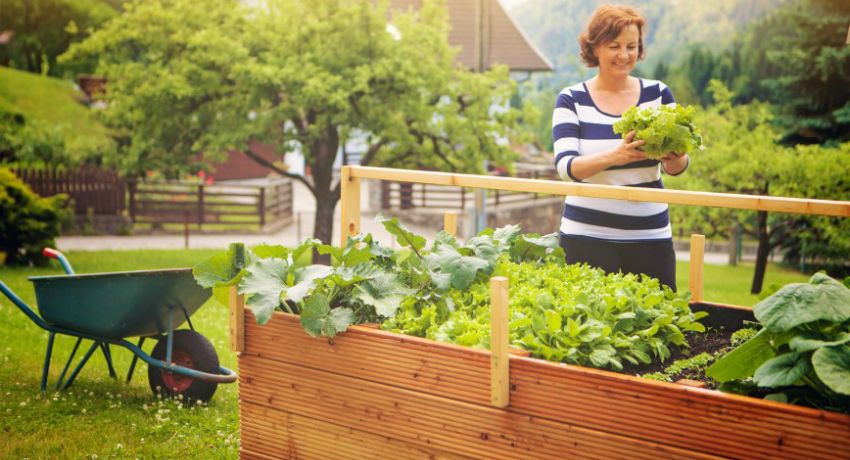This article discusses such a demanded type of finishing material as paint on wood for exterior work. The text provides an overview of the main categories of dyes used to decorate and protect the facades of wood and other objects used in outdoor conditions. Consider the properties and characteristics of alkyd, acrylic, oil and water-based compositions, as well as a description of popular brands.

Paint on wood for outdoor use and its types
Wood as a building material can offer a lot of advantages. It is low cost, affordable, environmentally friendly and easily amenable to various types of processing. Although this material has drawbacks, the most significant of these is vulnerability to atmospheric phenomena. Therefore, dyes as a finish are used not only to decorate the elements of wood, but also to protect them.
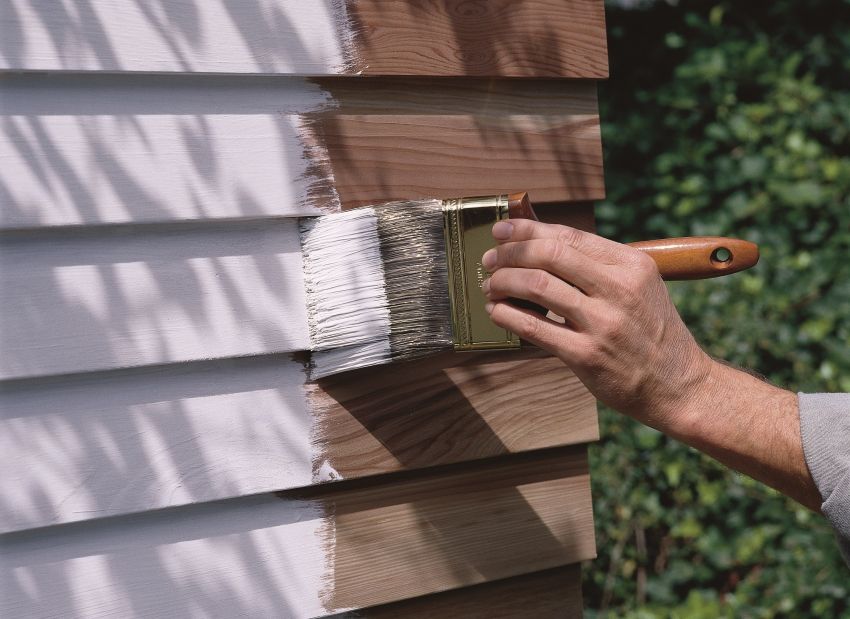
If the dye is chosen correctly, the service life of the building material increases
and protects against moisture, biological pests and ultraviolet rays, which have a detrimental effect on wood.
The modern market allows consumers to buy paint for the fence of wood of the following types:
- latex formulations;
- acrylic based blends;
- dyes with the addition of oils;
- alkyd formulations;
- water-based facade paints.
Almost all paint and varnish compositions have similar parameters, which are due to the general function of these materials – the protection of the wooden surface. The differences lie only in the composition and certain properties, as well as the decorative effect.

Helpful advice! Before you buy a dye, it is recommended to get acquainted with the information offered by the manufacturer, which reveals the properties of the product, its technical and operational characteristics, capabilities, features and composition.
Latex or silicone dyes are not in high demand because of their high cost. The properties of this coating will be useful for finishing objects operated in a humid climate. The main component of such compositions are silicone resins.
Dyes for wood latex-based have the following features:
- high strength characteristics of the coating, providing protection even with single-layer coating;
- resistance to the aggressive influence of reagents (to clean the surface, opened with a latex dye, you can use not only water, but alkaline solutions, without fear that the coating will be stained, get damaged or lose color brightness);
- inertness against ultraviolet radiation (thanks to this parameter, the coating does not undergo fading for a long time and does not need frequent updating).
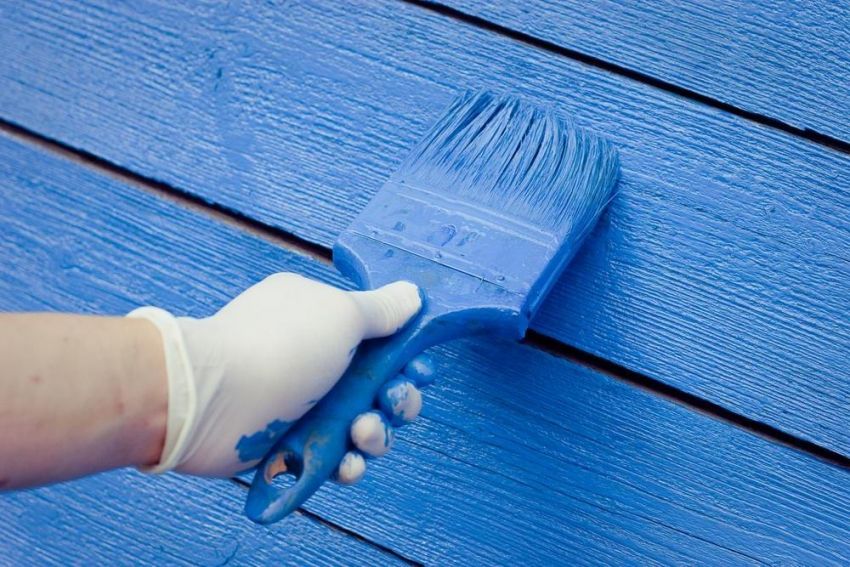
Latex dyes are characterized by increased resistance to moisture. The material responds well to mechanical loads in the form of friction and maintains integrity for a long time. Unlike its counterparts, in the form of acrylic paints on wood for outdoor use, silicone-based compounds are less vulnerable to high temperatures and offer a higher rate of vapor permeability. Silicone compounds can be applied on top of other coatings.
Oil dyes are characterized by low cost. Most often the main component of the composition is drying oil, which is an environmentally friendly substance.
For the manufacture of drying oil is used pressed oil from such plants:
- sunflowers;
- hemp;
- flax.
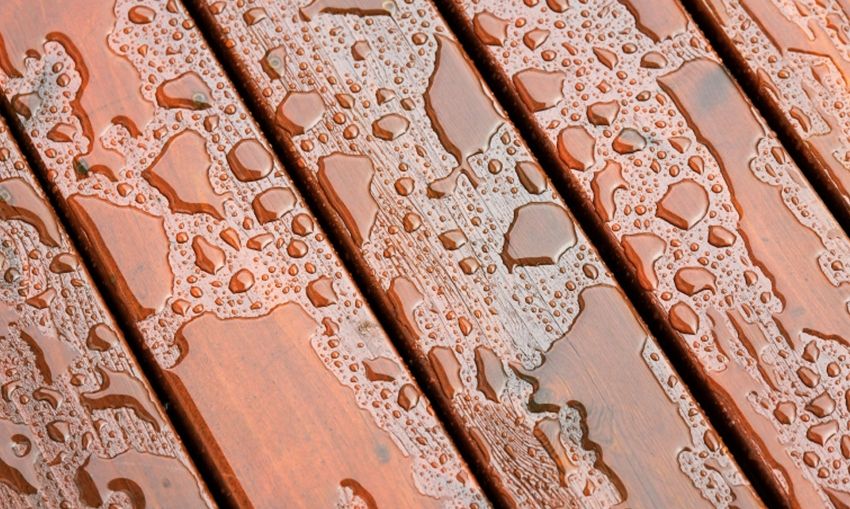
In addition to environmental friendliness, this paint can offer not so many advantages, therefore it is not as in demand as other types of coatings.
Disadvantages of oil based dyes:
- a sharp unpleasant odor that persists throughout the drying time;
- the coating quickly burns out in direct sunlight;
- dries for a relatively long time (minimum – 12 hours);
- short service life – 3 years;
- low steam permeability.
Important! It is strictly forbidden to apply oil formulations over water-based paint for exterior use. This will require prior removal of the old paint layer.
Acrylic dyes – the most common and popular group of compositions used for the finishing of facades of buildings and other objects.

Properties of acrylic based dyes:
- the composition forms a protective film on the treated surface;
- the finish has a high degree of protection against seasonal influences and atmospheric factors;
- high wear resistance;
- surface has good vapor permeability;
- the coating dries quickly;
- the composition has no unpleasant smell;
- high adhesion;
- compositions can be tinted in any shades.
- long service life – up to 20 years.
Consumers can buy acrylic paint for wood of two types:
- Water-dispersed.
- Solvent based.
Acrylic dyes for the facade based on solvents have other additives. These mixtures include weatherproof substances, UV filters and an organic resin. All these components provide a long absence of cracks, burnout and moisture damage. In this case, the coating has a breathable surface. In addition, the material is protected from the negative effects of temperature extremes.
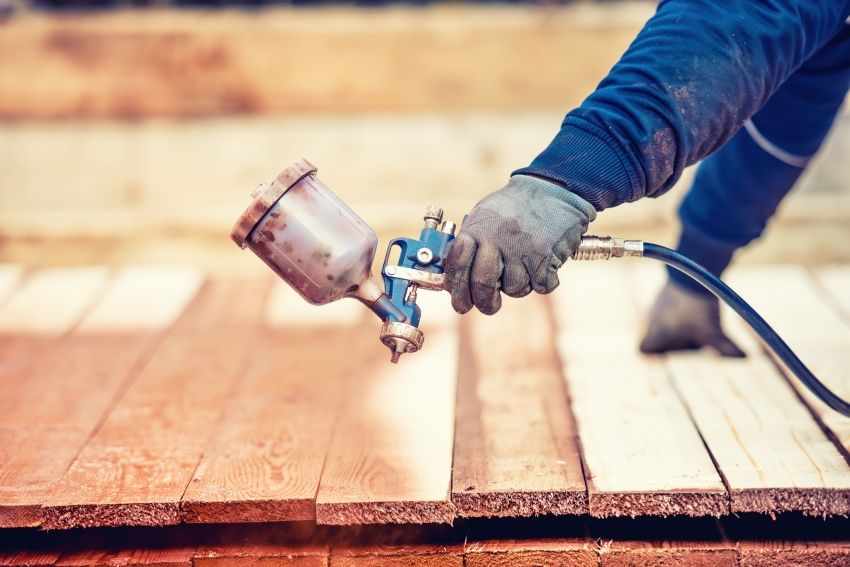
Some brands offer solvent based acrylics with special properties. For example, the dye Acrial-Lux can be applied to wood, even at low temperatures. Coloring is allowed when outside to -20 ° C.
Water-dispersed dyes consist of fillers and polymers. In some cases, there are compositions with the addition of marble chips.
Alkyd dyes are based on resins. As a supplement, oils are also present. The advantage of these materials is fast drying. As a result, dust and debris will not have time to adhere to the freshly painted wood, and sudden precipitation will not spoil the result.
Alkyd compounds have water-repellent properties. Processed wood receives full protection from the liquid, so these dyes are recommended to be used for finishing buildings located in regions with high humidity. The same applies to buildings located near open water. Front paint consumption per 1 m2 is 100-120 g.

This type of composition is not able to penetrate into the structure of the material, the presence of paint is only superficial. Therefore, it cannot be said that the tree is fully protected from any impact. In the process of dyeing, a strong film in the form of a membrane is formed on the surface. But she absolutely does not miss the air. And the manufacturers omit this moment.
Important! Alkyd-based paint should not be applied to raw wood. Dry the material thoroughly before processing. Otherwise, the surface of the coating will be covered with bubbles, after which it will begin to peel off and peel off prematurely.
Alkyd paints largely lose to acrylic compositions. Glossy gloss on the coating does not last long. Gradually, a matte effect appears on the surface. Under the influence of ultraviolet there is a rather fast burnout of the shade. Service life is also not long.
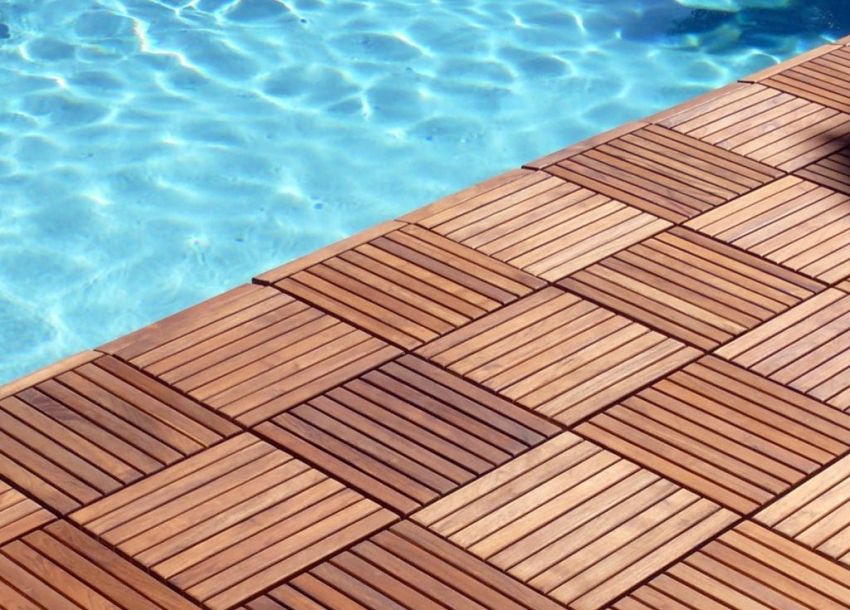
Water-based dyes are commercially available in acrylic, silicate, silicone formulations, as well as mineral emulsion mixtures. Therefore, the price of facade water-based paint for exterior work varies over a wide range – from 400 to 5000 rubles.
The advantages of water-based finishing materials:
- high bandwidth;
- the absence of toxic substances;
- a large palette of shades;
- the most primitive tools are suitable for coloring;
- painted surfaces are not afraid of chemicals used for cleaning, so you can easily cope with the removal of stains;
- if the dye has got on the skin or on other objects, it can be removed with the help of water and soap;
- the coating is elastic and not subject to cracks;
- long service life.

Not a lot of disadvantages. First, the coating is more vulnerable to moisture than other formulations. Secondly, dyes contain water, so the wood can swell after processing. To avoid this, it is recommended to use protective equipment. Therefore, the question of whether it is possible to paint a tree with water-based paint without pretreatment disappears.
| Packing, kg | price, rub. |
| 1.5 | 115 |
| 3 | 235 |
| 7 | 495 |
| 15 | 1015 |
The list of popular dyes for the protective treatment of wooden surfaces does not end there. There is a wide range of manufacturers and significant species diversity on the market, allowing you to choose the finishing material for any customer needs and surface requirements.

